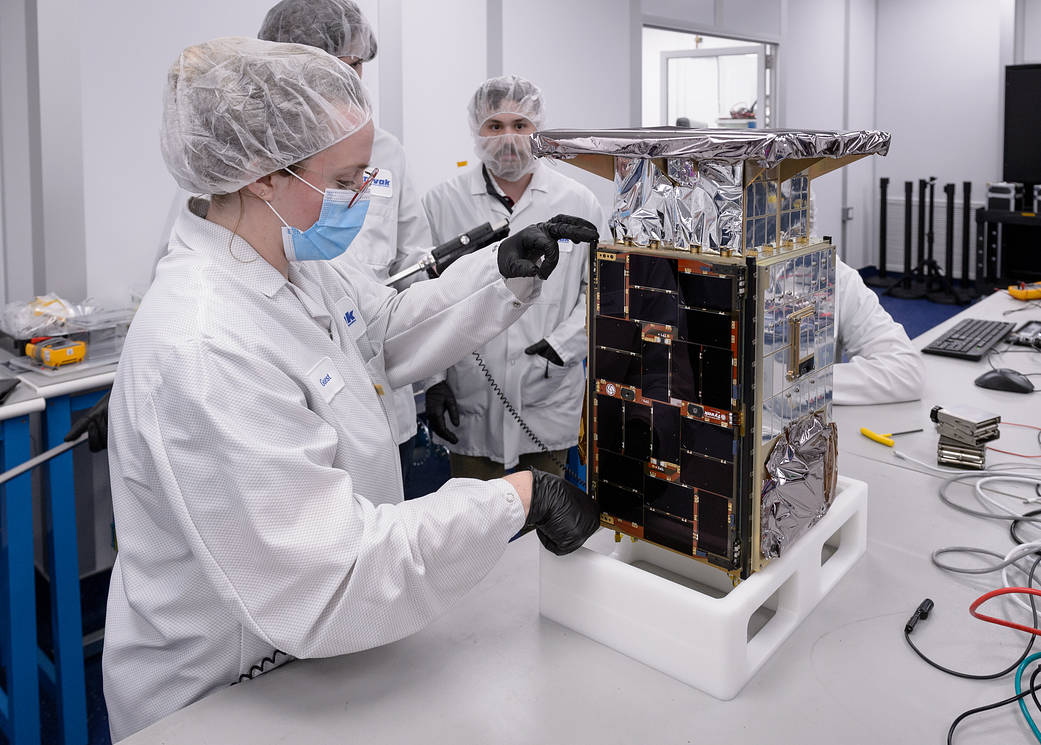CAPSTONE, the pathfinder for NASA’s lunar outpost, will test an orbit around the Moon that has never been flown before.
In this image from April 2022, the Cislunar Autonomous Positioning System Technology Operations and Navigation Experiment, or CAPSTONE, was undergoing final construction – and with solar panel installation and vibration testing now complete, the small satellite was shipped to its launch location in New Zealand.
CAPSTONE is slated to launch on Monday, June 27, aboard a Rocket Lab Electron rocket from the company’s Launch Complex 1 in Mahia, New Zealand. Live coverage will begin at 5 a.m. EDT on NASA Television, the agency’s website, and the NASA app.
The destination for this microwave oven-size CubeSat is a near rectilinear halo orbit (NRHO). That same orbit is planned for Gateway, a multipurpose outpost for long-term lunar missions as part of the agency’s Artemis program.
Six days after launch, the Photon upper stage will release CAPSTONE into space for the first portion of the spacecraft’s solo flight. After a four-month journey to the Moon, CAPSTONE will test the dynamics of the NRHO for at least six months, helping reduce risk for future spacecraft. CAPSTONE will also demonstrate innovative spacecraft-to-spacecraft navigation technology and one-way ranging capabilities that could help future spacecraft fly near the Moon with reduced need for communication with Earth.
Image Credit: NASA/Dominic Hart
CAPSTONE是NASA月球前哨站的探路者,它将测试一个以前从未飞行过的绕月轨道。
在这张2022年4月拍摄的照片中,地月自主定位系统技术操作和导航实验(简称“CAPSTONE”)正在进行最后的建造,随着太阳能电池板安装和振动测试的完成,这颗小卫星被运送到了新西兰的发射地。
CAPSTONE计划于6月27日星期一在该公司位于新西兰马希亚的发射综合体1上搭载火箭实验室电子火箭发射NASA电视台、NASA网站和NASA应用程序将于美国东部时间上午5点开始直播。
这个微波炉大小的立方体卫星的目的地是一个近似直线的环轨道(NRHO)。同样的轨道计划用于门户,这是一个长期登月任务的多用途前哨站,也是该机构的阿尔忒弥斯计划的一部分。
发射六天后,光子上级将把CAPSTONE释放到太空中,这是航天器单独飞行的第一部分。经过四个月的月球之旅后,CAPSTONE将对NRHO的动力学进行至少六个月的测试,以帮助降低未来航天器的风险。CAPSTONE还将展示创新的航天器对航天器导航技术和单向测距能力,这将有助于未来的航天器在月球附近飞行,减少与地球通信的需要。
图片来源:NASA/Dominic Hart







